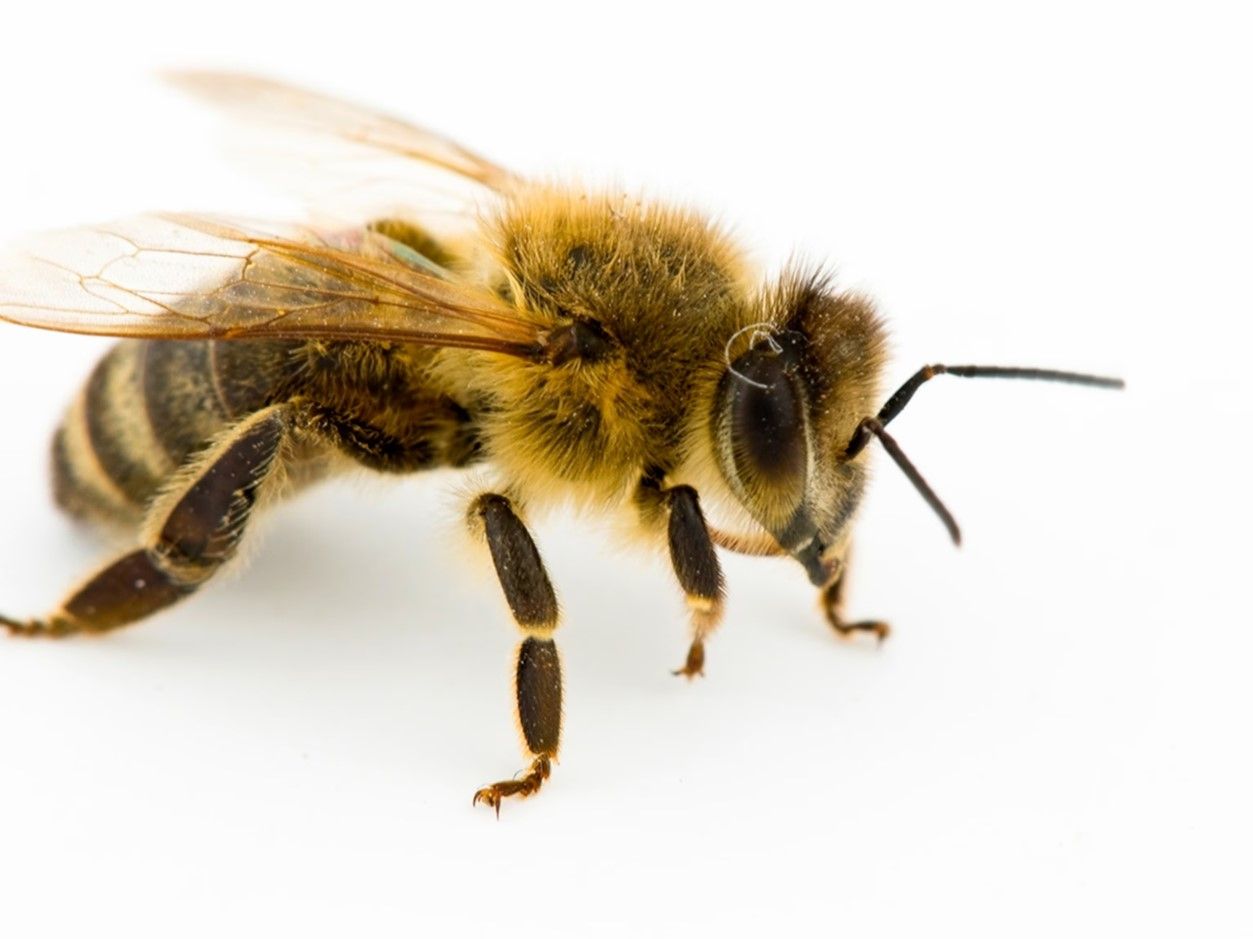1) Honey bee

Fig. 1 Honey bee
Honey bee colonies have 20,000 to 80,000 individuals. They are raised for honey and beeswax, and are essential for pollination of crops. The stinger has barbs, so that the stinger and the poison sac remain in the skin. Unlike wasps, honey bees can sting only once. Most honey bee colonies are in hives that are managed by beekeepers. However, some colonies swarm in large numbers and can be found outside. They may become established in walls or eaves of houses. The nests in walls can contain a lot of honey. If bees are controlled or removed, the nest and honey should also be removed to prevent problems to the house.
Common Name: Honey bee
Scientific Name: Apis mellifera
Habitat: Feral colonies of honey bees construct their nests from trees and, often, within wall voids in structures.
Biology and Behavior: Honey bees feed on nectar and produce wax and honey in their nest. Honey bees are beneficial insects, and control is often unwarranted. European honey bees are not aggressive, but can defend their nest. Africanized bees are very aggressive in defending their nests.
